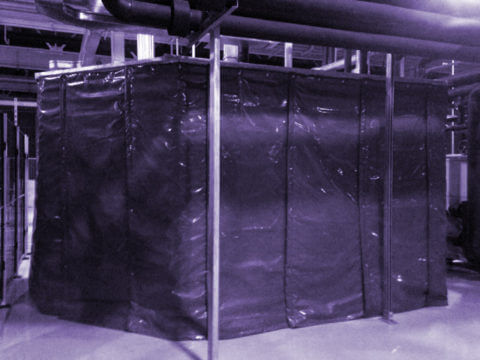Table of Contents
I. Introduction
II. Traditional Fencing as a Noise Barrier
III. Introducing Soundproof Tarps
IV. Effectiveness Comparison: Soundproof Tarps vs. Traditional Fencing
V. Practical Tips for Using Soundproof Tarps
VI. Other Applications of Tarps for Noise Control
VII. Factors to Consider When Choosing Tarps
VIII. Conclusion
I. Introduction
Noise pollution has become an increasing problem in modern society. From traffic noise outside our homes to construction site commotion nearby, finding ways to lessen intrusion has become paramount – noise barrier tarp offers us protection from unwanted sounds while providing a peaceful atmosphere for living and working environments alike.
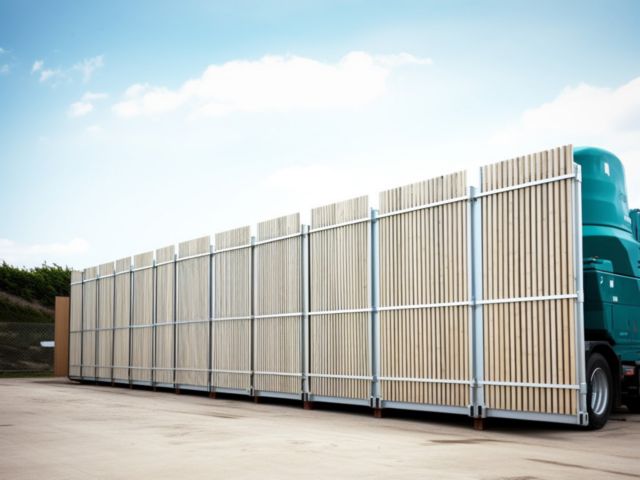
II. Traditional Fencing as a Noise Barrier
Traditional fencing has long been used as an effective noise-reduction strategy in homes and businesses alike, typically constructed out of materials like wood, metal or vinyl to act as physical barriers that help block noise transmission.
Pros of Traditional Fencing:
- Visual Appeal: Depending on their material selection, traditional fences can add aesthetic value while offering privacy and security to a property.
- Durability: Depending on which material they’re made from, traditional fences can withstand different weather conditions for years of enjoyment.
- Versatility: These jackets can be tailored to meet the requirements of different styles and sizes, making them suitable for an array of applications.
Cons of Traditional Fencing:
- Limited Noise Reduction: While traditional fencing can provide some degree of noise reduction in areas with high noise pollution levels, it may not offer optimal solutions.
- Installation can be costly: installing traditional fencing can be laborious and expensive for larger properties.
- Maintenance: Regular upkeep such as painting or repairing damaged sections is necessary to keep traditional fences looking their best.
Drawbacks of Traditional Fencing in Terms of Effectiveness:
- Sound Reverberation: Old-style fences can reflect noise back into their surrounding environment rather than absorb or block it effectively.
- Gaps and Openings: Depending on the design and installation, traditional fences may have gaps or openings that allow sound to pass through, reducing their effectiveness as noise barriers.
Traditional fencing certainly has its advantages when it comes to noise control, but its limitations should also be taken into account when trying to achieve effective noise reduction. Thanks to modern advances, however, alternative noise-blocking solutions such as soundproof tarps have come onto the scene which provide more effective approaches than traditional fencing when it comes to reducing transmission noise levels. We will explore their benefits and practical applications as alternatives in our next section.
Stay tuned for our next section where we’ll examine soundproof tarps and their distinct properties.
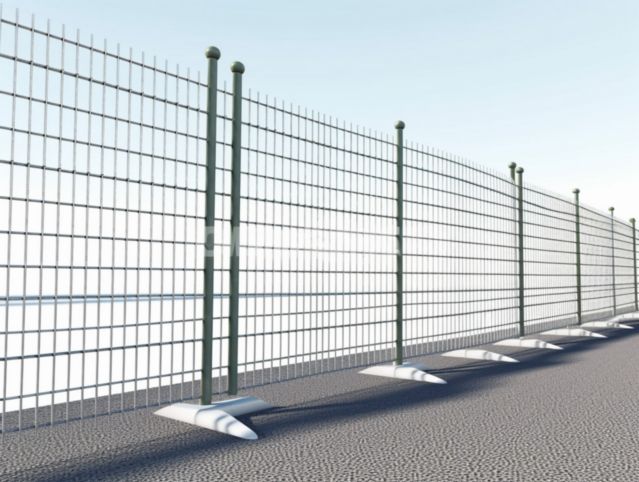
III. Soundproof Tarps
Soundproof wall tarps have recently gained prominence as an innovative and efficient noise control solution, offering unique benefits over traditional fencing in various settings. Their purpose-designed features specifically minimize noise transmission while making them suitable for various settings.
Soundproof patio tarps are constructed using materials with excellent sound-absorbing capabilities. The backyard tarps typically comprise multiple layers of sound-dampening materials like heavy-duty vinyl or polyester combined with noise-blocking foam or insulation in order to effectively absorb noise, creating a quieter and more peaceful environment.
Utilizing soundproof patio tarp as an alternative to traditional fencing can bring many advantages, so let’s examine some of them here:
- Unbeatable Noise Reduction: Soundproof tarp for backyard excel in their ability to reduce noise transmission. Its multiple layers of sound-dampening materials work together to absorb and block sound waves for increased noise reduction compared to traditional fencing systems.
- Cost-Effective Solution: Soundproof wall tarp may provide more cost-effective noise control than installing traditional fencing for larger areas, without compromising noise control effectiveness. The tarp wall offers more affordable noise mitigation without compromising noise control effectiveness.
- Easy Installation and Portability: Soundproof tarps for backyard are lightweight and simple to set up, making them an excellent option for temporary and permanent noise control solutions. The house tarp can easily be secured using grommets, hooks or Velcro straps and their portability allows for flexibility when moving or reusing them in different locations as necessary.
- Versatility in Applications: Soundproof house tarps offer an adaptable solution for various noise control requirements. From residential settings that need noise-canceling devices to construction sites where disruptions need minimizing and outdoor patios needing serenity, soundproof tarp walls provide a versatile noise reduction option that fits many environments.
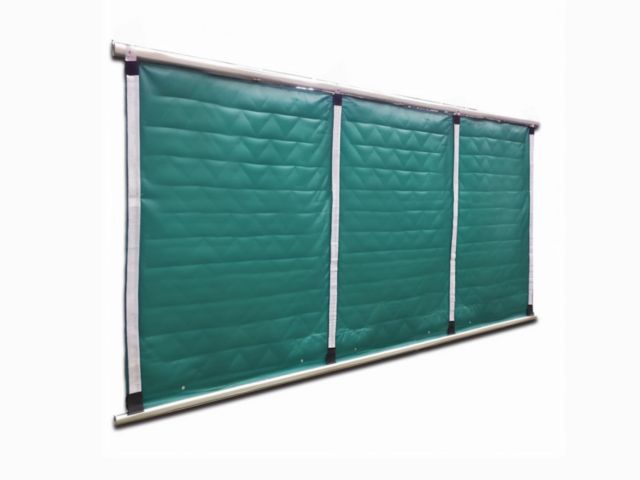
IV. Comparative Evaluation: Soundproof Tarps Versus Traditional Fencing
Comparing soundproof tarp solutions and traditional fencing when it comes to reducing noise transmission, various factors come into play. Here are a few key ones:
- Noise Reducing Capability: Soundproof best outdoor tarp has been specially constructed with sound-absorbing materials designed to reduce noise, offering more effective noise suppression than traditional fencing which may leave gaps or reflect sound waves.
- Cost: Traditional fencing can be an expensive investment on larger properties, while sound tarp offers a cost-effective noise control alternative without compromising its effectiveness.
- Installation and Maintenance: Traditional fencing requires professional installation and ongoing upkeep to remain in good condition, while temporary tarp wall can be easily assembled and maintained, providing an effortless noise-control solution.
Consider these factors, depending on your needs and budget, when choosing between soundproof indoor tarps and traditional fencing as ways of effectively reducing noise pollution.
Stay tuned for our next section, when we will delve deeper into practical advice for using soundproof road tarp and examine additional applications of noise control technology.
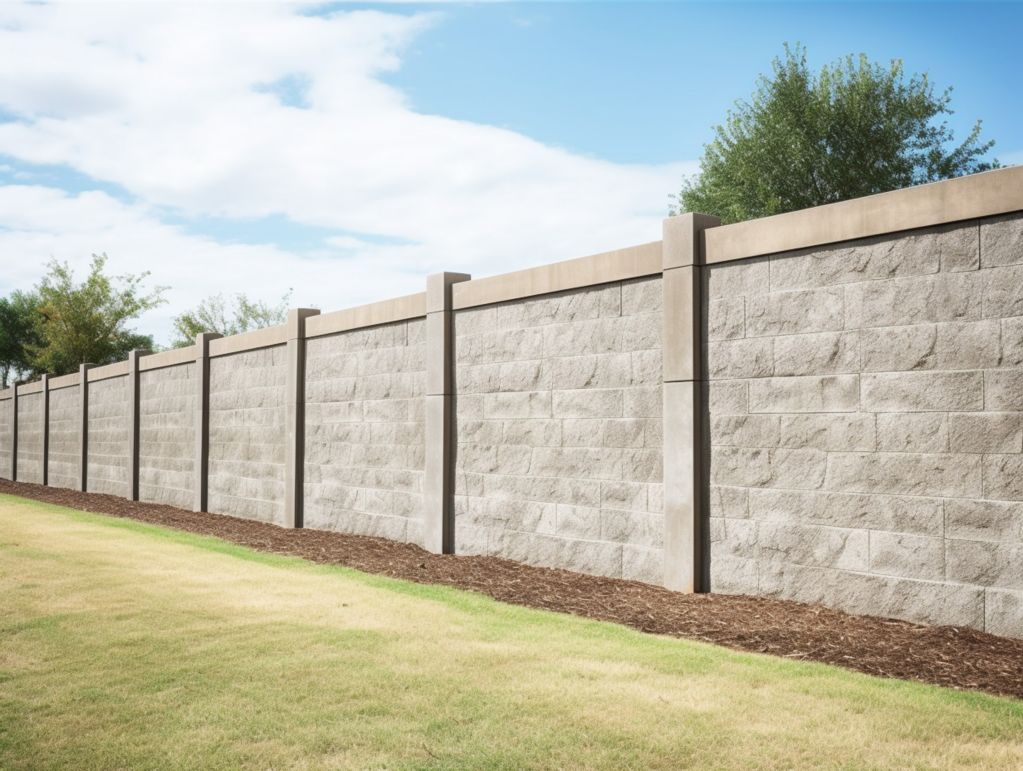
V. Practical Considerations When Employing Soundproof Tarps
Now that we understand the advantages and effectiveness of soundproof indoor tarp, let’s explore some practical tips for employing them effectively in soundproofing applications.
Step-by-Step Instructions about How to Hang a Tarp on a Wall:
- Measure the area that needs covering with soundproof micro tarp, then ensure it will adequately cover it. Afterward, select an adequate size tarp that covers this desired space.
- Clean the wall surface to remove any dirt or debris that could impede adhesion of the tarp to it.
- With adhesive-backed tarps, remove their backing carefully and press it firmly onto one corner before working your way across to secure it in place.
- For tarps without adhesive backing, utilize hooks, grommets, or other hanging mechanisms to secure it to the wall. For maximum soundproofing benefits, ensure the tarp is taut and stretched as necessary to maximize soundproofing capabilities.
Enhancing the Effectiveness of Soundproof Tarps:
- To enhance noise reduction, layer multiple soundproof decorative canvas tarps for increased noise abatement. The extra layers can absorb sound waves better and increase their effectiveness overall.
- Pay special attention to any gaps or openings that might compromise the soundproofing capabilities of the velcro tarp, and seal them using additional materials such as foam strips or weatherstripping so as to minimize sound leakage.
- Conduct regular inspections and maintenance checks of sound proof tarp to ensure they remain in top condition, replacing damaged or worn-out pieces immediately in order to achieve maximum noise reduction.
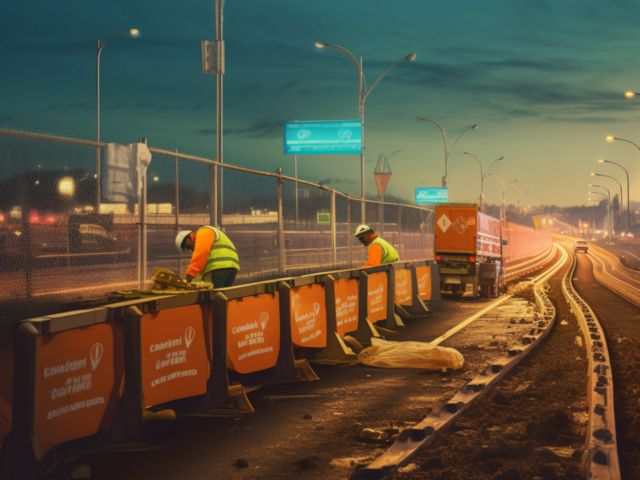
VI. Further Tarp Applications for Noise Reduction
Soundproof tarps from reliable tarp suppliers have many applications beyond hanging them on walls. Here are a few more areas where they can effectively reduce noise pollution:
- Temporary Tarp Walls: Temporary heat blocking tarp can provide a temporary noise pollution barrier at construction sites and event venues, offering flexibility and convenience. These walls can easily be assembled and dismantled as necessary, giving construction sites or events maximum flexibility and convenience when creating noise pollution barriers.
- Indoor Tarps: Tarps can help indoor spaces like offices and recording studios create an acoustically balanced environment by minimizing noise reflections and dampening soundwaves that create unwanted echo effects. By strategically hanging these fabric covers, they can absorb sound waves more effectively while decreasing reverberation time.
- Outdoor Patios: Create an idyllic outdoor experience by hanging soundproof tarps around the perimeter or seating areas to shield from external noise, creating a peaceful oasis and providing for an enhanced outdoor experience.
- Construction Projects: Construction sites can be noisy environments that cause disturbance to nearby residents or businesses. Utilizing tarp for construction project as noise barriers is one way tarps can help minimize noise impacts on construction sites while still allowing you to maintain harmonious relations within your surrounding community.
Through exploring these additional applications of soundproof tarps, you may uncover new and creative methods of noise reduction across diverse environments.
Stay tuned for the final section, when we will conclude our comparison between soundproof tarps and traditional fencing solutions, and provide our recommendations for noise reduction solutions.
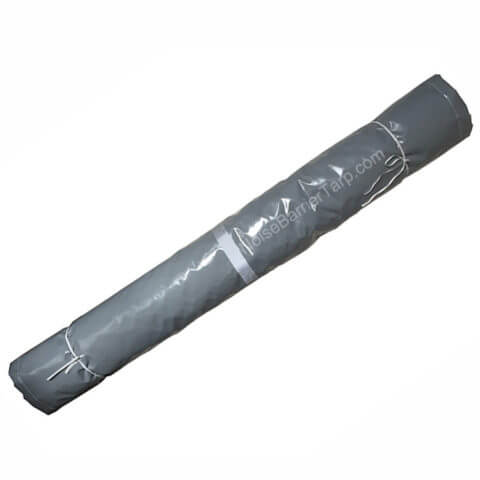
Insulated Tarpaulins
Outdoor Canvas Tarp Soundproof Outdoor Tarpaulin Insulation Tarp | Outdoor Tarps Noise Proof Insulated Tarpaulin Manufacturer Insulated Canvas Tarp
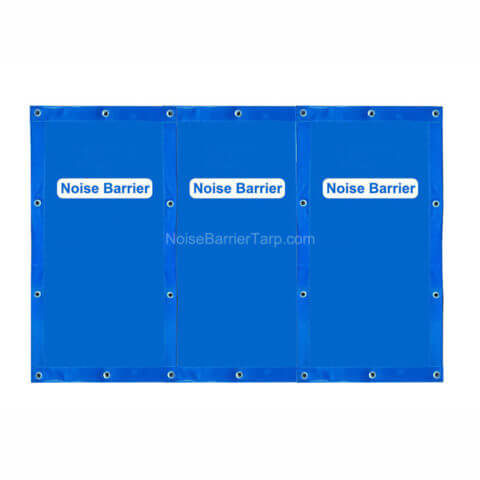
Portable Noise Wall
Manufacturer Industrial Noise Walls Road Noise Wall | Portable Generator Noise Reduction Barrier Factory Noise Wall Highway Noise Wall
VII. Consider When Selecting Tarps
When selecting the optimal soundproof tarp for your noise control needs, several key considerations should be kept in mind. Doing so will ensure you find something effective at reducing noise transmission but that also meets all of your specifications and needs. Here are a few key factors:
- Material: Tarp material plays an essential part in its soundproofing capabilities. Optimal sound-dampening materials for soundproofing include heavy-duty vinyl or polyester with noise-blocking foam or insulation to absorb and block sound waves effectively.
- Size: When considering which area needs covering, choose a tarp for wall large enough to envelop it completely – taking accurate measurements will ensure a perfect fit!
- Durability: Look for durable industrial tarps for sale that will stand up over time and provide soundproofing properties over regular usage. Think carefully about the materials used and construction details when making this choice; one with long-term stability can withstand daily wear-and-tear use without losing its soundproofing properties over time.
- Types of Tarps: Take time to explore all of the different kinds of outdoor tarps patio available on the market. Micro tarps, for instance, are lightweight and portable making them suitable for smaller noise control projects while shipping tarps are designed to withstand harsh weather conditions and heavy-duty use. Decorative canvas tarps offer both noise reduction and aesthetic appeal making them suitable for outdoor spaces.
By considering these factors, you can select a soundproof tarp patio that best meets your specific requirements and provides effective noise reduction in any desired setting.
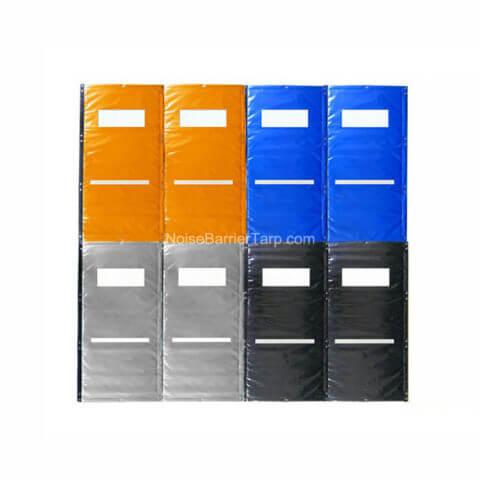
Temporary Noise Barrier Fencing
Manufacturer Tarp Fencing Wholesale | Noise Fencing Tarpaulin Manufacturer Noise Reducing Temporary Fencing Tarps
VIII. Conclusion
When it comes to noise control, soundproof tarps provide an effective and cost-efficient alternative to traditional fencing for noise reduction. While traditional fencing provides visual appeal and versatility benefits, soundproof tarps excel at effectively mitigating sound transmission; providing greater noise abatement at reduced costs with easy setup and mounting for multiple uses.
When choosing between sound proof tarps and traditional fencing, it’s essential to take into account factors like noise reduction capacity, cost, installation, and maintenance. Soundproof tarps with their sound-absorbing materials usually outshone traditional fencing when it came to noise abatement and were more cost effective and convenient solutions than fencing for noise control.
At the core, choosing between soundproofing tarps and traditional fencing ultimately depends on your individual needs, budget and preferences. Take into account all the considerations outlined here to make an informed decision about which option will work best.
Remember, effective noise control is crucial for creating a peaceful and relaxing environment. Whether using acoustical tarps or traditional fencing materials, your ultimate goal should always be minimizing noise intrusion to create a peaceful space.
If you require any further information or require assistance selecting the most effective noise barrier solutions to reduce road noise in house, do not hesitate to reach out. We are more than happy to provide assistance!

